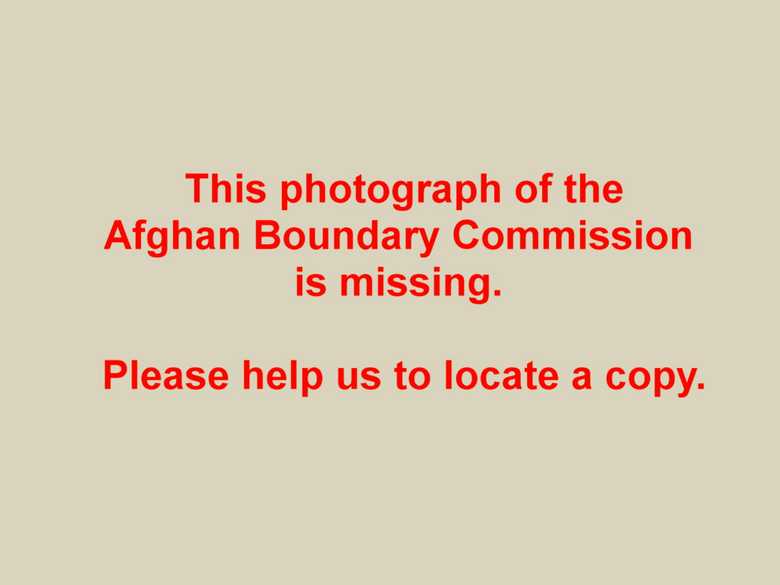ABC 114 — Zulfikar Pass
Presumably: View of the western flank of the table mountain, bordering the entrance to the Zulfikar Pass. This photograph was most probably taken by Dr. Charles Owen, mentioned as No. 1 in his diary.
[List:] 114. View of Zulfikar pass from the Persian side.
- Collection Edward L. Durand, sketches ELD 060: similar view.
- The Graphic, Vol. 31 (1885/1), March, 7, p. 238: “Moreover the Russians have occupied the Zulfikar Pass, twenty miles to the south of Pul-i-Khatun, so that they are in practical possession of the whole breadth of that tongue of land which, lying between Hari Rud and Murghab rivers, leads direct to Herat.”; Vol. 32 (1885/2), October 31, p. 479: “The pass is a split or chasm cleft through these ranges in a direction generally at right angles to their ‘strike’, and therefore consists of two successive defiles interrupted about midway by a broken valley. […]”; p. 497: engraving of the Zulfikar pass looking west.
- The Illustrated London News, Vol. 86 (1885/1), May 9, p. 477: engraving of the Zulfagar pass and a description of its name, “‘Zulfagar’ was the name of the Ali’s sword, a weapon as mystic and celebrated as the famous ‘Ex-calibur’, the sword of Arthur, and the tradition is, that the pass was cleft by a blow whit it given by the Khalif.”; Vol. 88 (1886/1), January 9, pp. 36-37: engraving of setting the first border pillar.
- Owen, Charles (1884-86): Transcript of diary and letters, p. 307: letter to Mrs CW Owen (dated 5 Oct 1885), “[…] Zulfikar is a horrible place. The only part of the Boundary settled at home has been to within 6 miles of Zulfikar so all the rest will have to be fought over […].”; p. 337: “10 Nov [1885] […] After breakfast left at 10am for Zulfikar reached at 11.45. […] Pass fine and cliffs grand. […] Took 2 photos this afternoon, No 1 of cliff of entrance to pass, No 2 of cliffs between N. side and extending N. forming southern [sic! eastern] bank of Hari Rud. […]”; p. 337: “12 Nov [1885] Thursday. 1st boundary pillar erected to-day, 2 versts from ruined tower on mound at entrance of Zulfikar Pass. Colonel, Durand, Yate, Merk etc. were there. […]”
- M.H.L. (1886): La Russie et l’Angleterre en Asie centrale. d’après la brochure de M. Lessar, p. 108: the Russian occupation of the Zulfagar defile in February 1885.
- Lansdell, H. (1887): Through Central Asia, Diplomacy and Delimitation of the Russia-Afghan Frontier, p. 624: “The boundary line was to be drawn from the Hari-Rud to the Oxus across the hilly country, which bounds on the south the low flat deserts of Turkmenia, and was to begin at Zulfikar. […] The pass, when approached on the Afghan side, is four hundred yards wide, with precipitous sides rising from four to five hundred feet. It is from two to three miles long, and soon narrows, being at one point not more than thirty yards broad, where, the sides continuing precipitous, the place could be easily held by a few braves against a large force. The ravine with its two openings could easily be made practicable for artillery, but it does not appear to be of very great military importance.”
- Yate, A.C. (1887): Travels with the Afghan Boundary Commission, f.p. 290: engraving of the Zulficar Pass.
- Parliamentary Blue Papers (1888): Sketch Map: Zulfikar Tower, approx: 35°35ʹ N / 61°10ʹ E.
- Yate, C.E. (1888): Northern Afghanistan or Letters from the Afghan Boundary Commission, pp. 75-76: general description of the Zulficar Pass.
- Adamec, L.W. (1975): Herat and north-western Afghanistan, pp. 436-438: Zulfikar.
- Adamec, L.W. (1981): Meshed and northeastern Iran, p. 688: Zulfikar, “An Afghan frontier post on the eastern Khorassan border, on the right bank of Hari Rud about 13 miles southeast of Zurabad. It is a squalid village of about 250 houses, situated at the foot of the remarkable cliffs of Dehaneh-i-Zulfikar or the Zulfikar pass, concerning which the legend runs that ‘Ali cleft it with his forked sword. On the northern cliff of the pass are two white pillars, defining the spot where the Afghan Boundary Commissioner commenced the erection of pillars.”
- Moran, N.K. (2005): Kipling and Afghanistan, pp. 87-89: setting of the first border post by the British commission at the Zulfikar pass; p. 88: part of the engraving published in The Illustrated London News, (1886/1), January 9, pp. 36-37.
Image No.
ABC 114
Collection
Afghan Boundary Commission 1884-86
Series
ABC 2, Photographs 058 to 116
Format
Sepia print
Place, date
Zulfikar, 1885
Descriptors
Latitude / Longitude35.604478 / 61.255615
Google Earth35°36ʹ30ʺ N / 61°16ʹ34ʺ E / 505 m
Google Mapshttps://maps.google.com
Zoom Earthhttps://zoom.earth
Survey of India MapSheet 29, Herat (1916): Zulfikar, J 39
You know more about this picture?


